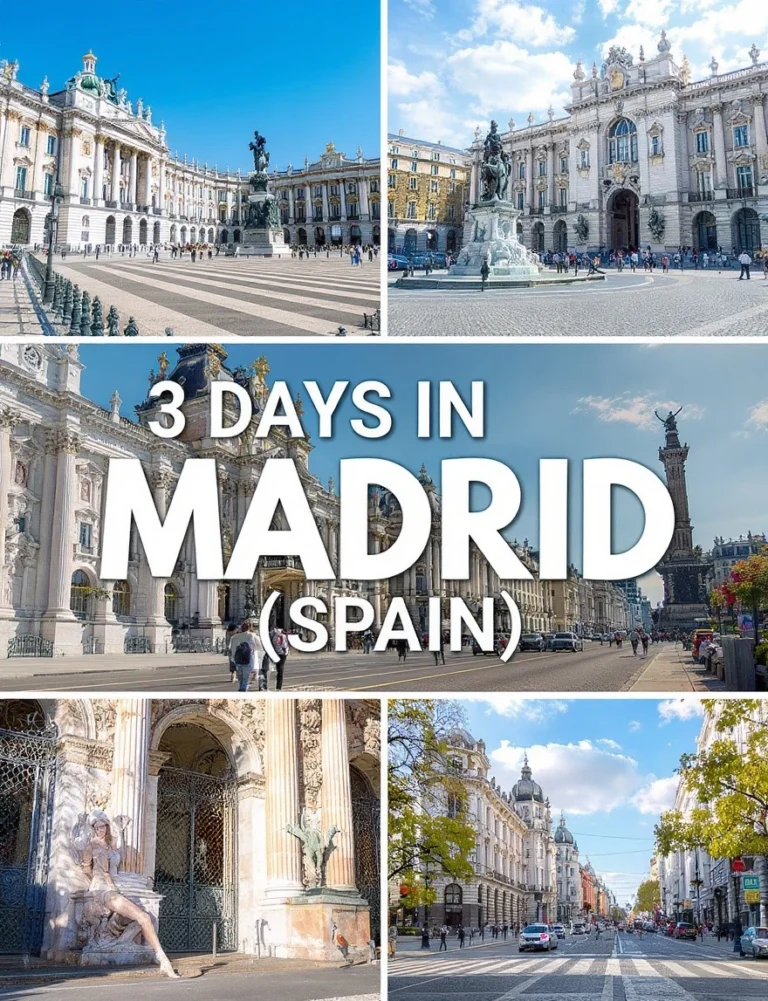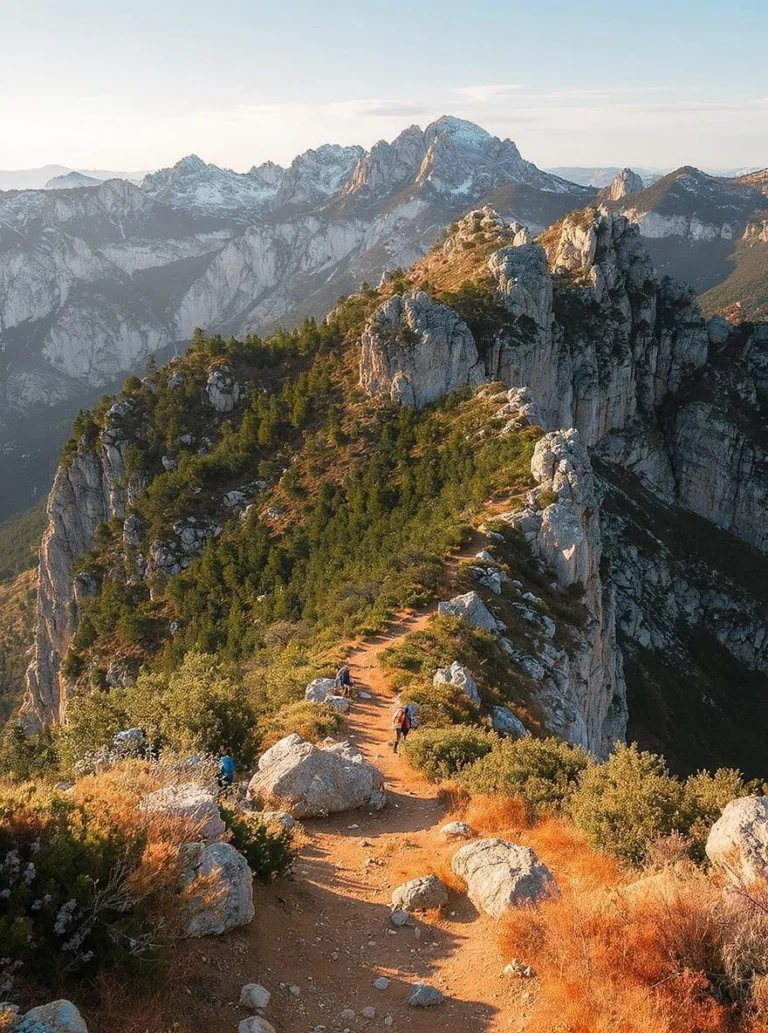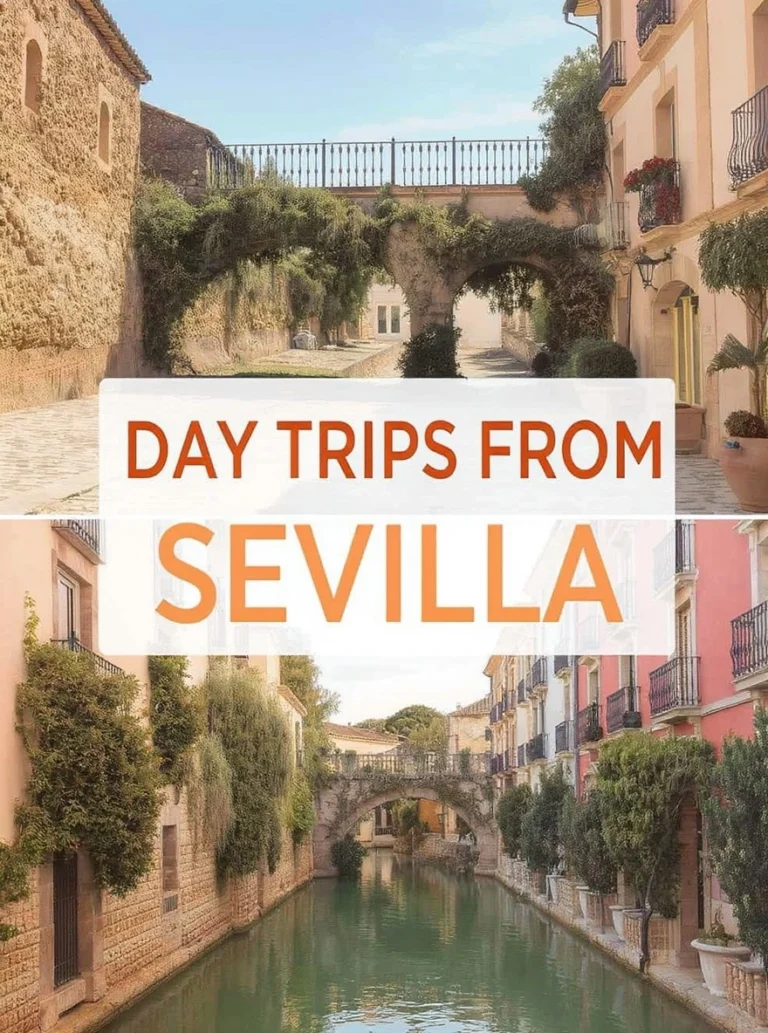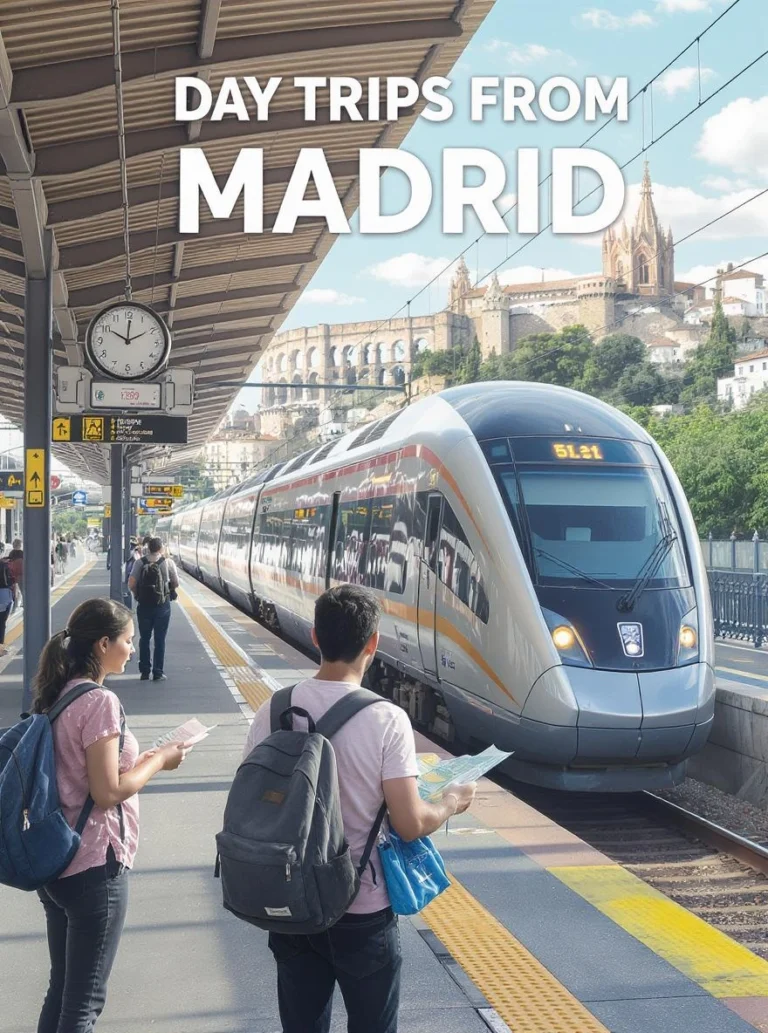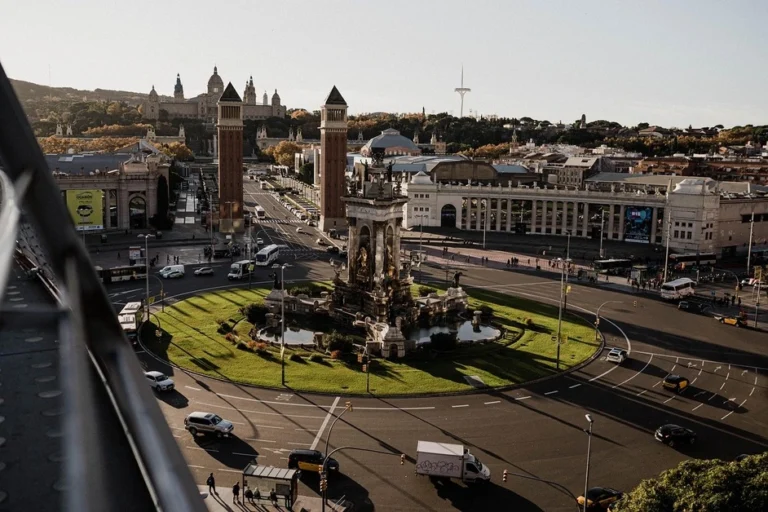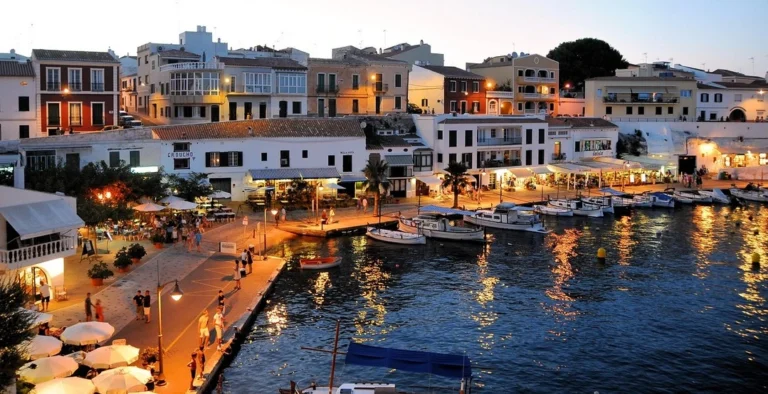Beyond the Postcards: Your Perfect 10 Day Spain Itinerary for Cultural Immersion & Culinary Delights
Table of Contents
Spain has a way of stealing your heart when you least expect it. From sun-drenched coastal towns to mountainous villages frozen in time, this European gem offers an intoxicating blend of diverse landscapes, centuries-old history, mouthwatering cuisine, and distinct regional cultures—all wrapped up in gloriously pleasant weather for much of the year. It’s no wonder Spain consistently ranks among Europe’s most visited destinations!
But here’s the thing about planning your first Spain trip itinerary: it can feel overwhelming. With so many incredible places competing for your attention, it’s tempting to pack your schedule with a whirlwind tour of a dozen cities. Trust me, I’ve seen too many travelers racing through Spain only to return home exhausted and feeling like they barely scratched the surface.
That’s exactly why I’ve created this guide. Instead of the usual “see everything in 10 days” approach that leaves you spending more time on trains than in plazas, I’m offering something different: a thoughtfully paced Spain itinerary that prioritizes cultural immersion and authentic experiences over checkbox tourism. This car-free journey focuses on three incredible cities—Sevilla, Madrid, and Barcelona—with strategic day trips that showcase Spain’s remarkable diversity.
Drawing from years of personal travel throughout the country, this itinerary goes beyond generic recommendations. You’ll find insider tips on which tours actually enhance your experience, which tourist traps to avoid, and how to taste the real Spain through its regional cuisines. Ready to dive in?
Planning Your 10 Day Spain Adventure: Key Logistics & Philosophy
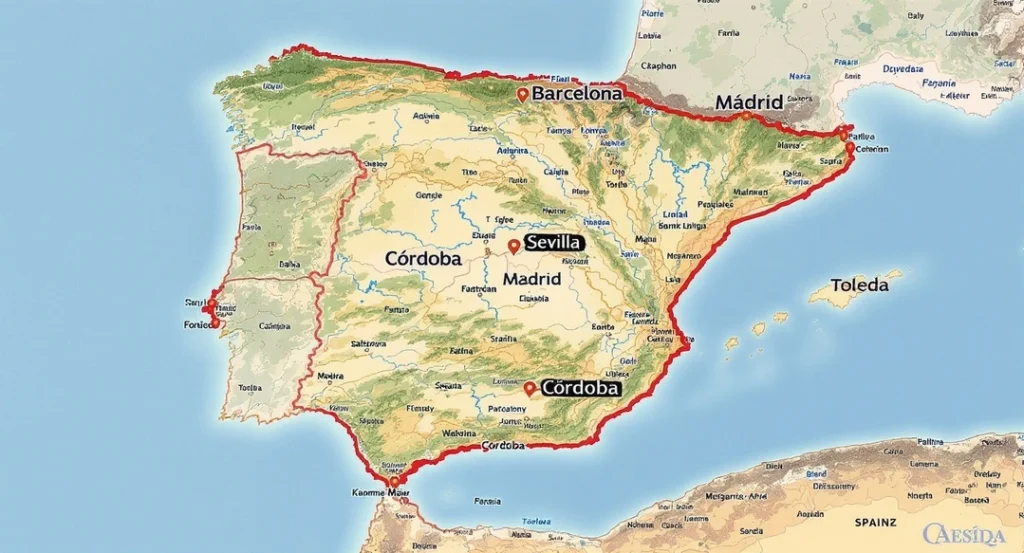
Pacing Philosophy: Quality Over Quantity
The single most important piece of advice for your Spain itinerary: slow down. I recommend spending no less than 2-3 nights in each destination. Why? Because Spain rewards those who linger. The country operates on its own delightful rhythm—late dinners, afternoon siestas, and plazas that don’t truly come alive until after dark. Racing through means missing the essence of what makes Spain special.
Plus, there’s a practical consideration: spending more time in fewer places means less time wasted on packing, checking in and out of accommodations, and navigating transportation. More time actually enjoying Spain, less time in transit. It’s a win-win!
Optimal Route Strategy
For a 10 day Spain itinerary, I strongly recommend starting in Sevilla and ending in Barcelona (or vice versa), with Madrid in the middle. This logical geographical progression minimizes backtracking and maximizes your precious vacation time.
Pro tip: Book an “open-jaw” flight (arriving in one city, departing from another). While sometimes slightly more expensive than a round-trip to a single city, the time you’ll save by not having to return to your starting point is absolutely worth it.
Getting Around Spain: Trains Are Your Best Friend
Spain boasts one of Europe’s finest high-speed rail networks, making a car-free itinerary not just possible but preferable. Here’s why trains beat flights for domestic travel:
- Time efficiency: When you factor in early airport arrivals, security lines, and transfers to/from city centers, high-speed trains often match or beat total travel time.
- Convenience: Train stations are typically located right in city centers, meaning you can often walk straight to your hotel.
- Comfort: Enjoy spacious seating, scenery, and the ability to get up and move around.
- Sustainability: Significantly lower carbon footprint than flying.
Booking trains in Spain:
Renfe (Spain’s national railway): Booking directly through their website often yields the lowest prices, but be warned—their site can be finicky with international credit cards, and you’ll need to know Spanish station namesOmio: This third-party booking platform offers an English interface and accepts international cards without issue. There’s a small service fee, but the convenience is worth it for many travelers.
For shorter distances or budget-conscious travelers, ALSA buses provide comfortable, affordable transport between many Spanish cities. They take longer than trains but can save you significant money.
The Core 10 Day Spain Itinerary: Day-by-Day Immersion
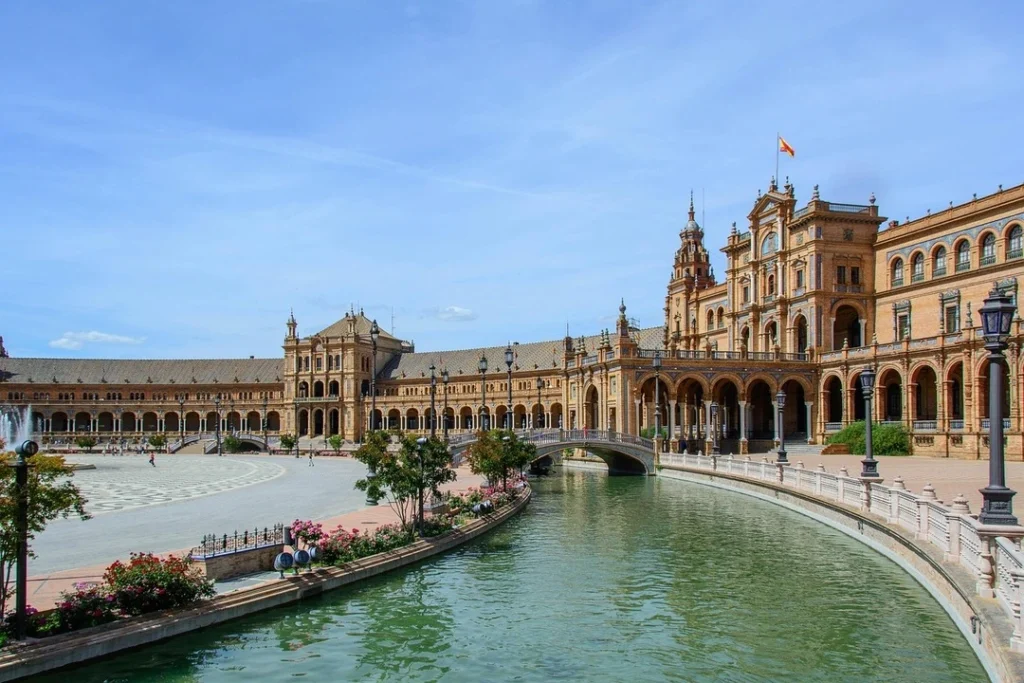
Days 1-3: Sevilla & a Day Trip to Córdoba – Andalusia’s Moorish Heart
Why Sevilla?
Starting your Spain itinerary in Sevilla offers the perfect introduction to the country’s layered history. This Andalusian capital wears its Roman, Visigothic, and Moorish influences proudly, creating a sensory feast of architecture, cuisine, and culture. It’s also where many of Spain’s stereotypes—late-night dinners, afternoon siestas, flamenco, and amazing charcuterie—are gloriously authentic. Think of it as “Spain turned up to 11.”
Getting There
If flying directly to Sevilla, you’ll arrive at San Pablo Airport, located about 10km from the city center. A convenient airport bus (€4) runs every 20-30 minutes to Plaza de Armas. Alternatively, taxis cost approximately €22-25.
If starting your Spain trip itinerary in Barcelona, you can reach Sevilla via a 5.5-hour high-speed train or a 1.5-hour flight.
What to Do in Sevilla
Royal Alcázar of Sevilla: This stunning complex might just be my favorite attraction in all of Spain. While many visitors think it’s purely a Moorish palace, it’s actually a fascinating example of Mudéjar architecture—Islamic design created under Christian rule. The layered history here tells the story of Spain itself.
Don’t miss: Book José’s Royal Alcázar tour for insights you’d never get wandering on your own. The gardens alone are worth the price of admission!
Catedral de Sevilla: The world’s largest Gothic cathedral stands on the site of a former mosque, with its bell tower (La Giralda) originally serving as the mosque’s minaret. Inside, you’ll find Christopher Columbus’s tomb—less a celebration of the man than a complex historical artifact prompting reflection on Spain’s colonial past.
Plaza de España: This grand semicircular plaza was built for the 1929 Ibero-American Exposition, which unfortunately coincided with the Great Depression. The resulting financial struggles mean this masterpiece never fulfilled its intended purpose, but it later found fame as a Star Wars filming location. Visit early morning (before 9am) to have it virtually to yourself.
Dive Deep into Sevilla’s Culinary Delights: Sevilla offers perhaps the most distinctive food culture on this Spain itinerary. Don’t miss:
- Vino de naranja (orange-infused wine)
- Spanish vermut (nothing like Italian vermouth!)
- Churros con chocolate (for breakfast, not dessert!)
- Local cheeses and acorn-fed Iberian ham
I highly recommend the Spain Food Sherpas tour to discover hidden gems you’d never find on your own.
Day Trip to Córdoba
Just 45 minutes from Sevilla by train lies Córdoba, home to the magnificent Mezquita-Catedral—perhaps the most extraordinary example of Spain’s Muslim-Christian heritage. This 8th-century mosque, later converted to a cathedral, retains its forest of red-and-white striped arches creating an atmosphere unlike anywhere else in the world.
Beyond the Mezquita, explore the charming Jewish Quarter, the Alcázar de los Reyes Cristianos, and Córdoba’s famous flower-filled patios.
Where to Stay in Sevilla
Sevilla’s historic center is compact and walkable. I recommend staying in the Casco Antiguo (Old Town), particularly in the Santa Cruz neighborhood. Great options include:
- Casa de las Especias: Lovely serviced apartments with kitchenettes
- TOC Hostel Sevilla: A boutique hostel with private rooms and a rooftop pool
Days 4-6: Madrid & a Day Trip to Toledo – The Liveable Capital
Why Madrid?
Though sometimes overlooked in favor of Barcelona, Madrid deserves a prime spot in your Spain itinerary. As the capital, it offers world-class art museums, a surprisingly walkable center, and perhaps the country’s most exciting contemporary food scene. It’s also the most “liveable” of Spain’s major cities, with authentic neighborhoods where tourists and locals mingle naturally.
Getting from Sevilla to Madrid
The high-speed AVE train connects Sevilla’s Santa Justa station to Madrid’s Atocha station in just under 3 hours. Trains run frequently throughout the day, and the journey offers pleasant views of the Spanish countryside.
What to Do in Madrid
Lexi’s Walking Tour: Start your Madrid experience with this outstanding historical walking tour. Lexi’s background as a historian means you’ll get compelling stories about Madrid’s evolution, not just basic facts. She also provides fantastic recommendations for local food and drink spots—perfect for your first day.
Dive Deep into Madrid’s Tapas Culture: Madrid’s tapas scene differs from Sevilla’s, reflecting its inland location and historical role as a melting pot. The famous Calle Cava Baja in La Latina neighborhood offers dozens of tapas bars in a concentrated area. Consider these guided experiences:
- Devour Madrid’s Ultimate Spanish Cuisine Tour
- The Original Madrid Tapas Crawl
- Wine and Tapas Walking Tour
The Museo del Prado: One of the world’s greatest art museums tells Spain’s history through masterpieces by Velázquez, Goya, El Greco, and others. Jaime’s guided tour provides context that transforms how you see these works. For the best experience, book the VIP Early Access Tour with Walks to enjoy the museum before the crowds arrive.
Reina Sofia: Home to Picasso’s “Guernica” and major works by Dalí and Miró, this museum showcases Spain’s enormous contribution to 20th-century art. The building itself—a repurposed hospital—is worth seeing.
Day Trip to Toledo
Just 30 minutes from Madrid by high-speed train, Toledo provides essential context for understanding Spanish history. This “City of Three Cultures” was once home to harmonious communities of Christians, Muslims, and Jews, creating a unique cultural blend visible in its architecture, cuisine, and artistic traditions. The Toledo Cathedral is one of Spain’s most impressive, while the narrow medieval streets seem frozen in time.
Where to Stay in Madrid
Madrid’s center is walkable, with excellent public transportation. Top neighborhoods include:
- Malasaña: My top recommendation for first-timers—hip, central, and full of great bars and restaurants. Try 7 Islas Hotel or Sonder Malasaña.
- Barrio de las Letras: Literary district with a convenient location near major museums. Room Mate Alba offers great value here.
- La Latina: For local character and amazing tapas bars. Check out limehome Madrid La Bolsa.
Days 7-10: Barcelona & a Day Trip – Catalonia’s Unique Identity
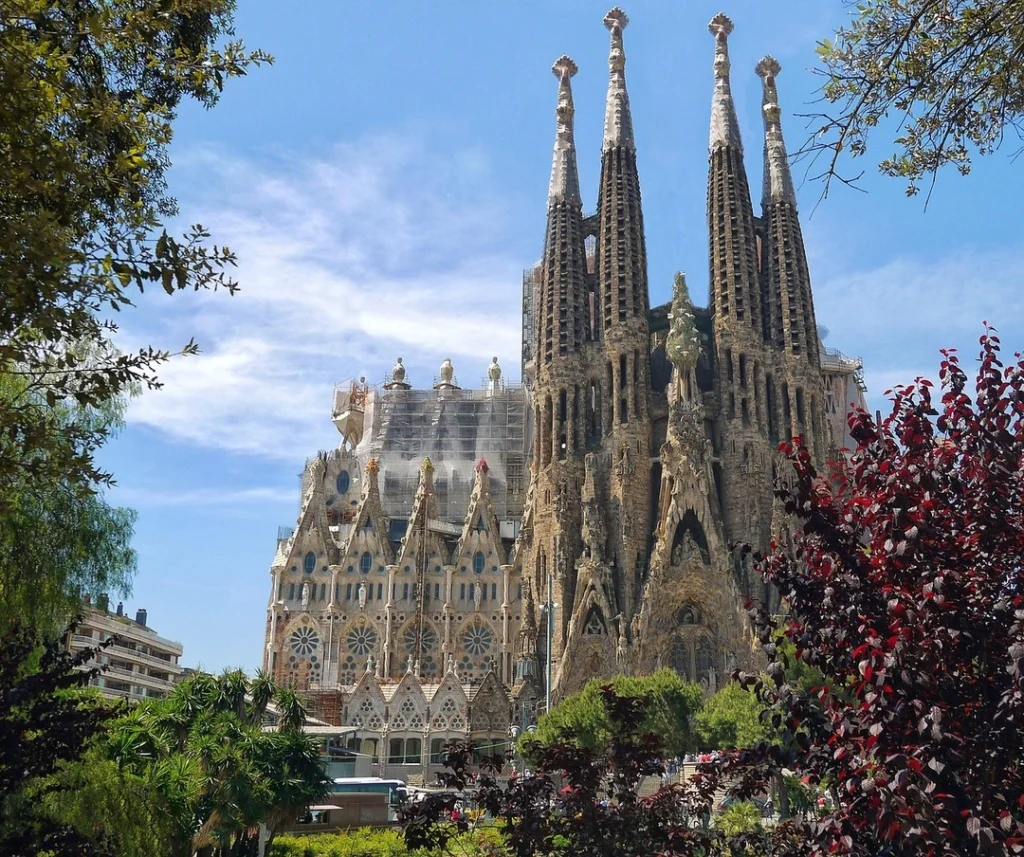
Why Barcelona?
The final stop on your Spain itinerary introduces you to Catalonia’s distinct cultural identity. With its own language (a blend of Spanish and French influences) and strong independence movement, Barcelona often feels like a different country. It’s a forward-looking city of cutting-edge design, innovative cuisine, and architectural masterpieces, all set against the Mediterranean.
Getting from Madrid to Barcelona
The high-speed AVE train connects Madrid’s Atocha station to Barcelona Sants in approximately 2.5 hours, with departures almost hourly throughout the day.
What to Do in Barcelona
The Sagrada Familia: Gaudí’s unfinished masterpiece is unlike any church you’ve ever seen. The genius is in the details—every column, window, and facade element tells a story. The interior, with its forest-inspired columns and kaleidoscopic light, can be genuinely moving. A guided tour or audio guide is essential for understanding Gaudí’s vision.
Other Gaudí Sites: Rather than rushing to see all of Gaudí’s buildings, choose one to explore thoroughly. Casa Batlló and Casa Milà (La Pedrera) are the most famous, but consider Casa Vicens for a less crowded, equally fascinating alternative.
Explore Local Markets (Skip La Boqueria!): While La Boqueria appears in every guidebook, it’s now primarily a tourist attraction. For authentic market experiences, head to Mercat de la Barceloneta or Mercat de Santa Caterina.
Cava, Vermouth, and Seafood Tapas: Barcelona’s food scene is driven by its coastal location and Catalan traditions. Don’t miss:
- Local vermouth at Las Vermudas
- Bombas (potato croquettes with spicy sauce) at La Cova Fumada
- Fresh seafood tapas in Barceloneta
Learn to Make Paella: Though paella originated in Valencia, not Barcelona, Clara’s cooking class offers a wonderful cultural immersion. She accommodates dietary restrictions and shares fascinating stories about Catalan cuisine.
Choose Your Own Adventure Day Trip
Barcelona offers excellent day trip options without changing hotels:
Montserrat: This dramatic mountain monastery houses the Black Madonna and offers hiking opportunities with spectacular views. Take an early train or join a guided tour to avoid afternoon crowds.
Girona: Dive deeper into Catalan culture in this beautiful walled city where Catalan, not Spanish, is the primary language. The well-preserved medieval Jewish Quarter and impressive cathedral are highlights.
Costa Brava: For beach lovers, the rugged Costa Brava offers crystal-clear waters and charming fishing villages. This option works best with a guided tour or rental car.
Where to Stay in Barcelona
Unlike many guides, I recommend avoiding the Gothic Quarter, which has become overwhelmingly touristy. Instead, consider:
- Gràcia: My favorite Barcelona neighborhood—charming, local, with excellent restaurants and a village-like feel. Hotel Barcelona 1882 is a great mid-range option.
- L’Eixample: Central and convenient, with many Modernista buildings. Try Be Mate Paseo de Gràcia or Casa Bonay.
- El Born: Hip, authentic, and close to both the Gothic Quarter and waterfront. Mercer Hotel offers luxury in a historic building.
What to Do with More Time in Spain (Beyond 10 Days)
If you’re lucky enough to have more than 10 days for your Spain itinerary, consider these additions:
Granada (+2 Days): My top recommendation for extending your trip. The Alhambra palace complex showcases the pinnacle of Islamic architecture in Spain, while the Albaicín quarter offers atmospheric streets and sunset views of the Alhambra.
Another Day Trip from Barcelona (+1 Day): Use an extra day to explore more of Catalonia’s diverse offerings.
Ronda (+2 Days): This dramatic town perched on sheer cliffs above a deep gorge requires some effort to reach but rewards visitors with breathtaking views and whitewashed buildings. Allow two nights to justify the journey.
What to Do with Less Time in Spain (7 Days or Less)
If you have fewer than 10 days for your Spain trip itinerary:
For 7-9 Days: Cut either Sevilla or Barcelona (not both), maintaining the quality-over-quantity approach. Keep Madrid as your central hub.
For 5 Days or Less: Focus on a single city with day trips. Madrid offers easy access to Toledo, Segovia, and Salamanca, while Barcelona connects to Montserrat, Girona, and Tarragona.
Essential Travel Tips for Your Spain Trip
Best Time to Visit: April-May and September-October offer ideal conditions—mild weather and fewer crowds. July and August bring intense heat (especially in Sevilla) and European holiday crowds.
Currency & Payments: While credit cards are widely accepted, carry some cash for smaller establishments and transportation outside major cities. ATMs are abundant.
Tipping Culture: Unlike in the U.S., tipping in Spain is a bonus for exceptional service, not an obligation. Restaurant servers earn living wages. A 5-10% tip at restaurants and rounding up taxi fares is generous.
Safety: Spain is generally very safe, but be vigilant against pickpockets in crowded tourist areas, particularly in Barcelona and Madrid. Use a money belt or hidden pouch for valuables.
Opening Hours: The traditional afternoon siesta break (roughly 2-5pm) still exists in smaller towns and some businesses, though it’s less common in major cities and tourist areas.
Language: While Spanish (Castilian) is the primary language, you’ll encounter Catalan in Barcelona. English is widely spoken in tourist areas, but learning basic Spanish phrases is appreciated.
Mealtimes: Adjust your schedule for Spanish dining hours—lunch typically starts at 2pm, dinner no earlier than 8pm (and often later).
Conclusion & Next Steps
This 10 day Spain itinerary offers the perfect blend of experiences—from Sevilla’s Moorish splendor to Madrid’s regal elegance and Barcelona’s creative energy. By focusing on quality over quantity, you’ll return home with authentic memories and a deeper understanding of Spain’s diverse cultures.
Have you been to Spain? I’d love to hear your experiences in the comments below! Need personalized help planning your trip? Check out my travel consultation services for customized itinerary planning.
Looking for more detailed information on specific destinations? Check out my in-depth guides to Madrid, Barcelona, Sevilla, and Granada, or explore my 7-day and 14-day Spain itineraries for alternative timeframes.
¡Buen viaje!


